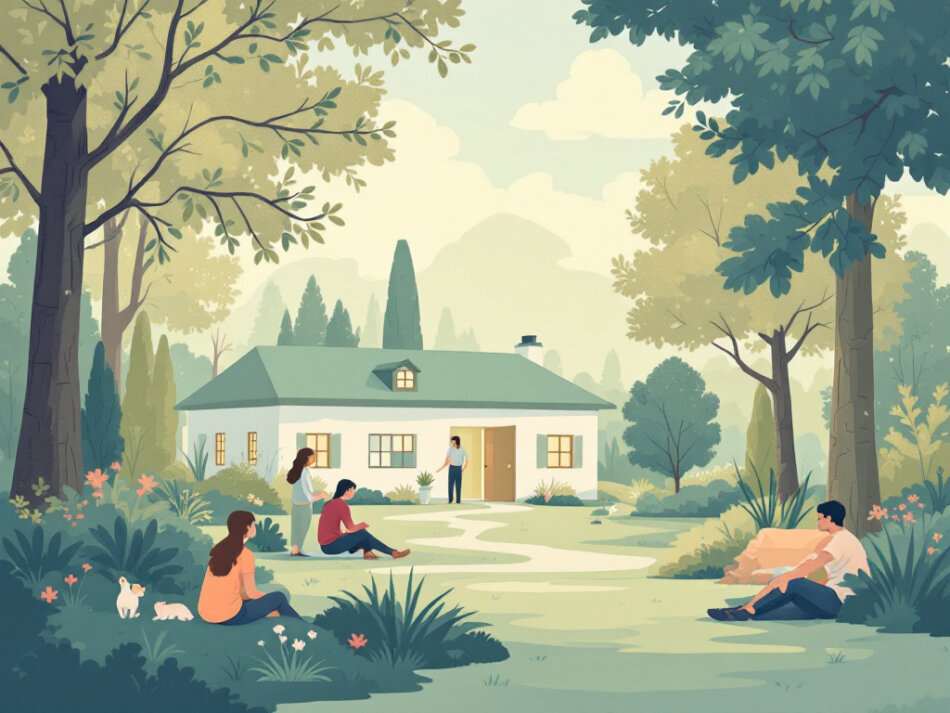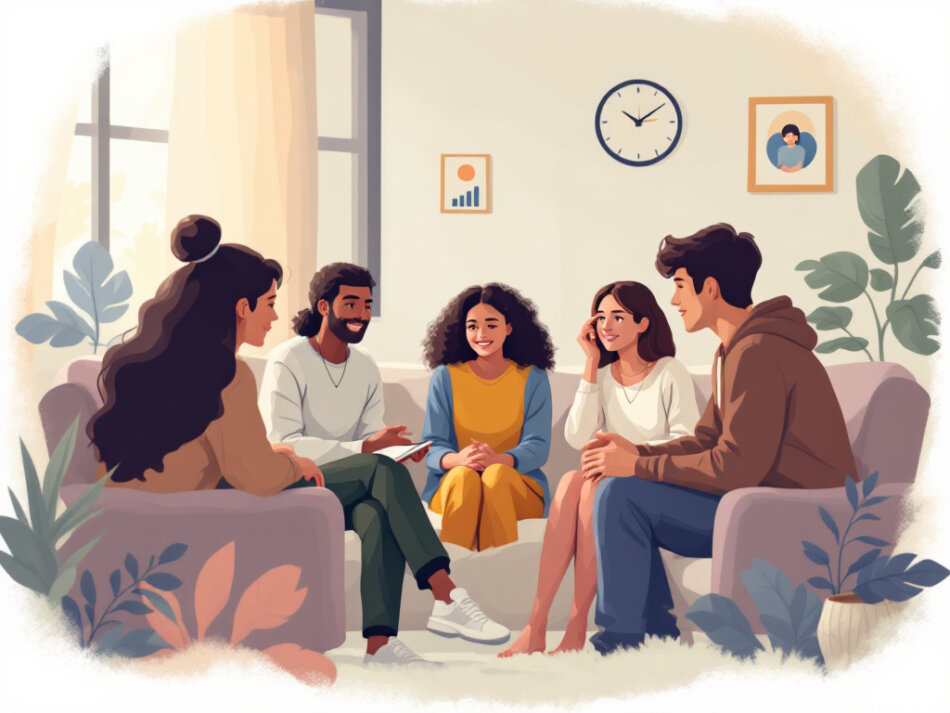Residential therapy with holistic programming for teens offers a comprehensive, structured environment where adolescents can engage in clinical treatment alongside creative, experiential, and wellness-based modalities. If your teen struggles to open up in traditional talk therapy, these programs blend art, music, equine, outdoor, mindfulness, and movement therapies to foster emotional regulation, confidence, and communication skills—all within a safe, 24/7 residential setting. Many of these centers accept insurance, making holistic teen care more accessible to families.
These programs integrate evidence-based clinical therapies with hands-on, expressive activities designed to meet teens where they are. From daily art projects to guided equine sessions, your child benefits from personalized treatment plans that include psychiatric support, individual and group therapy, and family involvement. By the end of this guide, you’ll understand how to evaluate program options, identify the right modalities for your teen, and plan for a successful transition home.
Understanding holistic residential therapy
Holistic residential therapy combines standard clinical approaches—such as cognitive behavioral therapy—with complementary healing practices that address mind, body, and spirit. In a residential setting, your teen lives on-site under professional supervision, ensuring consistent support and routine.
According to Horizon Recovery, teen residential treatment programs offer 24/7 structured care specifically for adolescents aged 12 to 20, integrating evidence-based therapies with academic continuity and family engagement [1]. This model acknowledges that mental health, behavioral challenges, and substance use issues are interconnected. By combining holistic practices with clinical treatment, teens build coping strategies that extend beyond their stay.
Who benefits from holistic programs
- Teens resistant to talk therapy or one-on-one counseling
- Adolescents dealing with anxiety, depression, trauma, or dual diagnosis
- Young people who thrive with hands-on or creative outlets
- Families seeking comprehensive care including academic support
Holistic residential settings work alongside your teen’s existing therapy or medications, offering a multidisciplinary team of psychiatrists, therapists, educators, dietitians, and recreational specialists. This collaborative model ensures personalized treatment plans that evolve with your child’s progress.
Insurance coverage and costs
Many holistic residential centers accept private insurance plans, including PPOs and some HMOs. Facilities often handle preauthorization and claims, reducing administrative burden on families. Programs that emphasize insurance coverage include teen holistic therapy that accepts insurance and experiential therapy that accepts insurance. Always verify your plan’s out-of-network policies and potential copayments before enrollment.
Exploring creative therapy modalities
Holistic residential programs use a variety of creative and experiential therapies to engage teens who struggle in traditional settings. Each modality complements clinical work by offering alternative channels for expression and healing.
Expressive art and music therapies
Art and music therapy let teens explore emotions through painting, drawing, songwriting, and improvisation. These therapies can uncover underlying feelings that are difficult to articulate verbally.
- Art and music therapy for teens incorporates individual and group sessions facilitated by licensed creative arts therapists.
- Therapy for teen trauma through art and movement combines EMDR or DBT with expressive media to address PTSD or attachment wounds.
Research shows that creative expression enhances self-awareness and emotional regulation, especially for teens who feel uncomfortable sharing feelings in a traditional office setting.
Equine and outdoor therapies
Equine therapy and adventure-based programs leverage nature and animal interactions to build trust, responsibility, and resilience.
- In equine therapy for adolescents, your teen works with horses under the guidance of a certified instructor, improving nonverbal communication and emotional attunement.
- Outdoor therapy and adventure programs for teens feature rock climbing, ropes courses, wilderness treks, and team challenges that boost confidence and peer support.
Both modalities foster problem-solving skills, reduce stress hormones, and encourage mindfulness in natural settings.
Mindfulness and movement practices
Integrating mindfulness and yoga helps teens develop focus, self-compassion, and stress management techniques.
- Mindfulness and yoga therapy for teenagers teaches breathwork, guided meditation, and basic yoga postures to reduce anxiety and improve mood.
- Experiential DBT and mindfulness for adolescents merges dialectical behavior therapy skills—like distress tolerance and emotional regulation—with hands-on exercises and reflective journaling.
Regular practice empowers your teen to pause, observe triggers, and choose healthier responses.
Therapeutic recreation and experiential learning
Therapeutic recreation uses structured group activities to build social skills, resilience, and a sense of belonging.
- Therapeutic recreation for teens with emotional challenges includes art projects, music ensembles, and cooperative games.
- Adventure therapy for teen recovery offers structured outdoor challenges that mirror real-life stressors in a supportive context.
These modalities strengthen communication, teamwork, and self-esteem, complementing clinical goals.
Highlighting holistic therapy benefits
Integrating creative and experiential therapies within residential care yields measurable benefits for teens’ emotional and behavioral health.
Building emotional regulation
Holistic therapies teach teens to identify and manage feelings before they escalate. Through art projects and mindfulness exercises, your child learns to:
- Recognize physical and emotional cues
- Employ grounding techniques during distress
- Practice self-soothing and breathing methods
Studies of programs like Rogers Behavioral Health’s teen residential therapy highlight improvements in anxiety and depression when holistic approaches treat interconnected issues rather than isolated symptoms [2].
Fostering communication skills
Expressive and equine therapies encourage nonverbal communication, helping teens articulate needs and collaborate with peers.
- Group art sessions invite verbal sharing in a low-pressure environment.
- Horse handling requires clear body language and trust.
Improved communication extends beyond treatment, supporting healthier family and peer relationships.
Enhancing confidence and resilience
Overcoming adventure-based challenges and mastering new creative skills boosts self-efficacy. Teens gain:
- A sense of accomplishment from completing projects
- Confidence in trying unfamiliar tasks
- Resilience through guided reflection on setbacks
Holistic programs foster long-term coping strategies, reinforcing positive identity formation.
Reviewing program structure
Residential therapy programs balance therapeutic, educational, and recreational elements in a predictable daily schedule.
Typical daily schedule overview
A structured day may include:
- Morning mindfulness or yoga
- Academic instruction with accredited curricula
- Individual therapy (CBT, DBT, EMDR)
- Group expressive sessions (art, music, equine)
- Lunch and recreational break
- Therapeutic recreation or adventure activities
- Family sessions or parent education workshops
- Evening reflection and journaling
This balance ensures your teen receives consistent clinical care, academic continuity, and restorative downtime.
Family involvement and support
Family therapy is a cornerstone of holistic residential care. Programs like Newport Academy use Attachment-Based Family Therapy (ABFT) to repair relationships and build trust between parents and teens [3]. Regular family weekends and remote conferencing help you stay engaged in your teen’s progress.
Academic continuity and life skills
Residential centers partner with accredited schools or provide on-site educators. Teens keep pace with credits while learning essential life skills:
- Time management and organization
- Healthy meal planning and nutrition
- Conflict resolution and communication
Balancing academics and therapy lays the foundation for successful reintegration.
Choosing the right program
With myriad options, selecting the best fit requires careful consideration of several factors.
Evaluating treatment teams
Look for multidisciplinary staff including:
- Board-certified psychiatrists and psychologists
- Licensed therapists specializing in adolescent mental health
- Creative arts therapists, equine specialists, and adventure guides
- Dietitians, educators, and nursing staff
A collaborative team ensures holistic care tailored to your teen’s needs.
Assessing treatment modalities
Ensure the program offers a mix of:
- Clinical therapies (CBT, DBT, EMDR, motivational interviewing)
- Creative and experiential therapies [4]
- Holistic offerings (yoga, mindfulness, nutrition, spiritual care)
Programs like holistic mental health program for teens highlight whole-person treatment planning.
Considering location and environment
A peaceful, credentialed setting promotes healing. Ask about:
- Campus size, living accommodations, privacy options
- Outdoor access for adventure and equine work
- Safety protocols and staff-to-teen ratios
Visiting the facility helps you gauge fit and comfort level.
Checking insurance acceptance
Verify that your provider covers:
- Residential care and individual/group therapy
- Specialized modalities like equine or art therapy
- Family sessions and discharge planning
Many centers list accepted insurers, for example teen holistic therapy that accepts insurance.
Showcasing top residential centers
Below are featured programs that combine clinical rigor with holistic, creative therapies.
Horizon Recovery
Horizon Recovery offers a teen residential program integrating mental health treatments, family involvement, academic support, and compassionate healing practices [1]. Their dual diagnosis specialty and accredited setting ensure evidence-based care alongside holistic programming.
Rogers Behavioral Health
Rogers’ West Allis facility provides holistic residential therapy for teens, combining medical evaluation, nutrition education, personalized eating plans, and spiritual care to address root causes of anxiety, depression, and substance use [2]. Family support and experiential activities reduce loneliness and build resilience.
Newport Academy
Newport Academy creates a home-like environment for ages 12 to 18, offering Attachment-Based Family Therapy, CBT, DBT, EMDR, art, music, yoga, and outdoor adventures [3]. Their multidisciplinary team and structured academic program foster emotional resilience and sustained recovery.
Silver State Adolescent Treatment
Silver State Adolescent Treatment integrates traditional counseling with mindfulness, creative arts, movement therapy, and nutrition guidance to treat the whole person [5]. Equine-assisted activities and family therapy reinforce emotional growth and support.
Kemah Palms
Kemah Palms pairs luxury accommodations with clinically advanced care and holistic support, including trauma-informed art, music, and nature therapies [6]. Their youth-focused approach emphasizes mind-body-spirit integration for adolescent rehab.
Evoke Wellness Ohio
Evoke Wellness Ohio offers a residential therapy program emphasizing nutrition, exercise, mindfulness, and structured meal plans to restore physical and mental health [7]. Teens benefit from tailored fitness routines, meditation, journaling, and guided imagery in a serene Ohio setting.
Planning for aftercare support
A successful residential stay extends into comprehensive aftercare, ensuring your teen’s progress continues at home.
Aftercare planning and support
Effective programs create individualized discharge plans that may include:
- Outpatient therapy and support groups
- Continued expressive or experiential sessions [8]
- Family check-ins and community resources
Ongoing care prevents relapse and reinforces learned skills.
Community resources and continuing therapy
Local options can supplement aftercare:
- Peer support groups (Narcotics Anonymous, teen peer circles)
- Art studios or music lessons with therapeutic focus
- Yoga studios offering teen-friendly classes
Integrating community services keeps teens engaged and accountable.
At-home options vs residential care
While home treatment can be effective, especially for severe psychiatric symptoms, research shows residential care provides structured separation from triggers and higher success rates in building new coping strategies. A 2024 meta-analysis found no significant differences in psychosocial improvements between home and inpatient settings, suggesting home treatment is a valid alternative but does not replace the immersive benefits of residential care [9].
Conclusion and next steps
Exploring residential therapy with holistic programming for teens opens the door to transformative care that goes beyond traditional talk therapy. By combining expressive art, equine work, outdoor adventure, mindfulness, and clinical treatments within a structured environment, these programs build emotional regulation, confidence, and communication skills. As you evaluate options, consider your teen’s unique needs, insurance coverage, and the center’s credentials.
Next steps:
- Review program brochures and virtual tours
- Verify insurance benefits and preauthorization
- Schedule facility visits and staff interviews
- Involve your teen in discussions about modalities and daily routines
- Prepare for family engagement during and after residential care
With the right holistic residential program, your teen can embark on a healing journey tailored to their creative and emotional needs, setting the stage for lasting recovery and growth.











